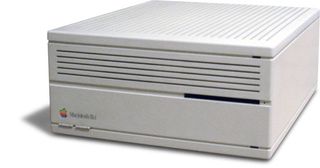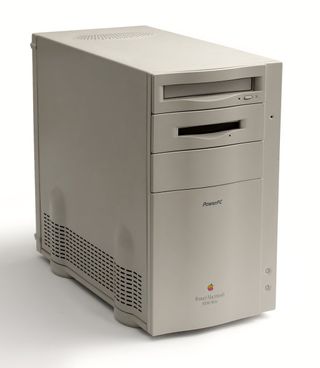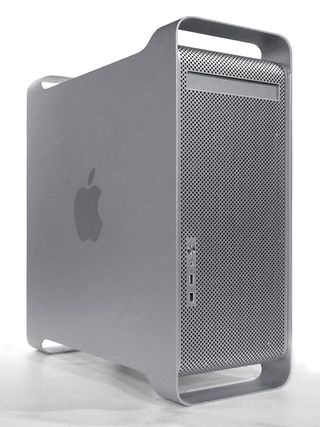Macs then and now: Comparing 30 years of bang for your buck

The Macintosh turns 30 this week, and it's changed a lot over the years — from a compact beige box that looked like a kitchen appliance, equipped with a black and white display and floppy drive, to the array of laptop and desktop machines we know today. Thirty years is a long time, so I thought it might be fun to compare Macs over the years to see how pricing and features have changed.
The original Mac — $2,495

In 1984, when the original Mac hit the scene, it cost $2,495. It came equipped with a Motorola 68000 microprocessor zipping along at a speedy 8 MHz (not gigahertz, mind you, megahertz), equipped with 128K RAM and a single 400K internal floppy drive, keyboard, mouse, operating system software and some apps. Adjusted for inflation, that's almost $5,600 in today's dollars.
Swapping dollar for dollar, you'd be $105 short of a 15-inch Retina MacBook Pro, upgraded with 2.3 GHz quad-core Intel Core i7 processor, 16 GB RAM, 512 GB flash storage and Nvidia GeForce GT 750M graphics. Plus you get the full suite of Apple's iLife and iWorks apps and all the other software that comes with Mavericks.
Adjusting for inflation, $5,600 will get you an 8-core Mac Pro equipped with 16 GB RAM, 256 GB flash storage and Dual AMD FirePro D500 GPUs.
Just to put it in perspective, the fastest supercomputer of 1984, the Cray X-MP, doesn't even come close to the processing capability of a Mac Pro. In fact, back in 2011, the co-manager of the benchmarking tool used to judge the speed of today's supercomputers said that the iPad 2 had the same processing power as the X-MP's successor, the Cray 2. What's more, the X-MP cost about $15 million.
The Mac IIci — $6,700

The Macintosh IIci was one of the most popular computers of its day. When it appeared in 1989, businesses flocked to the machine. It was fast, it was capable, and it was expandable. It was one of Apple's most popular machines, lasting until 1993 before it would be replaced. And it cost $6,700 — more than a new 1989 Honda Civic.
The Mac IIci was equipped with a Motorola 68030 processor clocked at a blistering 25 MHz. It came with a 40 MB hard disk drive and a 1.44 MB floppy drive. The IIci had eight SIMM sockets for memory and initially shipped with 1 MB of RAM preinstalled.
Master your iPhone in minutes
iMore offers spot-on advice and guidance from our team of experts, with decades of Apple device experience to lean on. Learn more with iMore!
Again, swapping dollar for dollar, you'd be in Mac Pro territory. You could bump up that eight-core Mac Pro to 32 GB of RAM and 1 TB of flash storage before you hit Mac IIci territory.
But adjusted for inflation, it's a different story entirely: you're looking at $13,148. Throw in another $50 and you can get yourself a completely murdered out Mac Pro equipped with 12-core processor, the maximum amount of RAM and flash storage you can get from Apple (64 GB and 1 terabyte), upgraded AMD FirePro D700 dual GPUs and a 32-inch 4K display from Sharp, too.
Power Mac 8100 — $4,250

Ten years after the first Mac debuted, things had changed quite a bit. Apple was moving into the PowerPC era with the simultaneous launch of three Power Mac systems. The high-end model that year was the Power Mac 8100, a desktop mini-tower system equipped with a PowerPC 601 processor clocked at 80 MHz, with 8 MB RAM, 500 MB hard disk drive, internal floppy and optional 2x CD-ROM drive. It was a sizzling machine in its day.
Dollar for dollar, you'd be able to get two very nicely equipped 27-inch iMacs for that money, both equipped with 3.4 GHz quad-core Intel Core i5 processors, 8 GB RAM, 1 TB hard drive and Nvidia GeForce GTX 775M graphics. Hardware-accelerated graphics were still a ways off yet, by the way — early PowerPC systems still used the older NuBus expansion slot architecture found on Macs since the Mac II.
In 2013 dollars, you'd have about $6,680 to spend. That's enough to buy two fully-loaded 15-inch Retina MacBook Pros with enough left over for a 27-inch Thunderbolt Display and some extra goodies, too.
Power Mac G5 — $1,999

By the time the Mac turned 20, things had progressed. Mac tower systems had grown bigger and badder, and the Mac was now in its fifth (and, as it turns out, final) generation of PowerPC processor (hence the "G5" in the Power Mac moniker).
The Power Mac G5 had debuted a year earlier in 2003, ushering in the first use of the giant aluminum cheese grater-style case we came to know and love with the Mac Pro as well. But 2004 brought with it a refresh and significant improvements — a dual 1.8 GHz configuration, 80 GB of hard disk space (20 times the amount of storage as the Power Mac 8100), an 8x SuperDrive capable of reading and writing CDs and DVDs, 256 MB RAM, and Nvidia GeForce FX 5200 graphics — though the Power Mac G5 used AGP Pro for its video card interface instead of PCI.
$1,999 is the same price Apple charges today for a high-end stock configuration of the iMac. It's also the same price as the low-end stock 15-inch MacBook Pro. Interesting to note that the yardstick has changed for the Mac Pro, though, which costs $1,000 more.
Adjusting for inflation, as we're approaching the modern age, you'd have about $2,465 to spend — enough for a 13-inch MacBook Air, a 21.5-inch iMac and an AirPort Express to connect them.
More bang for your buck
Thanks to the ever-progressing pace of miniaturization, improvements in component manufacturing and dramatic changes in technology, you get a hell of a lot more bang for your buck buying a Mac these days than you used to.
Apple's a company that's famous for making money from the sale of hardware rather than software — though the company's software and services are an increasing part of its bottom line, Apple still makes most of its money from the sale of devices, Macs included.
But as you can see, Apple's improved the value of its machines pretty significantly over the years, as well. While at one time it might have been said that Apple charged a huge premium compared to PCs of the day, those days are far in the rear view mirror.
If you actually compare what you get in terms of hardware/software integration, features and functionality, plus the quality of the engineering itself, Apple products often come out quite favorably. Just recently, a PC side tried to build its own Mac Pro and came out behind — they couldn't beat Apple's price. Couldn't even come close.
As good a value as today's Macs are compared to past models, I have no doubt that we'll be sitting here in 2023 marveling at how much people paid for a relative paucity of processing power and storage.
Do you remember what you paid for your first Mac? Was it worth the money? Tell me what you think of Mac price performance over the years in the comments below.
Most Popular





